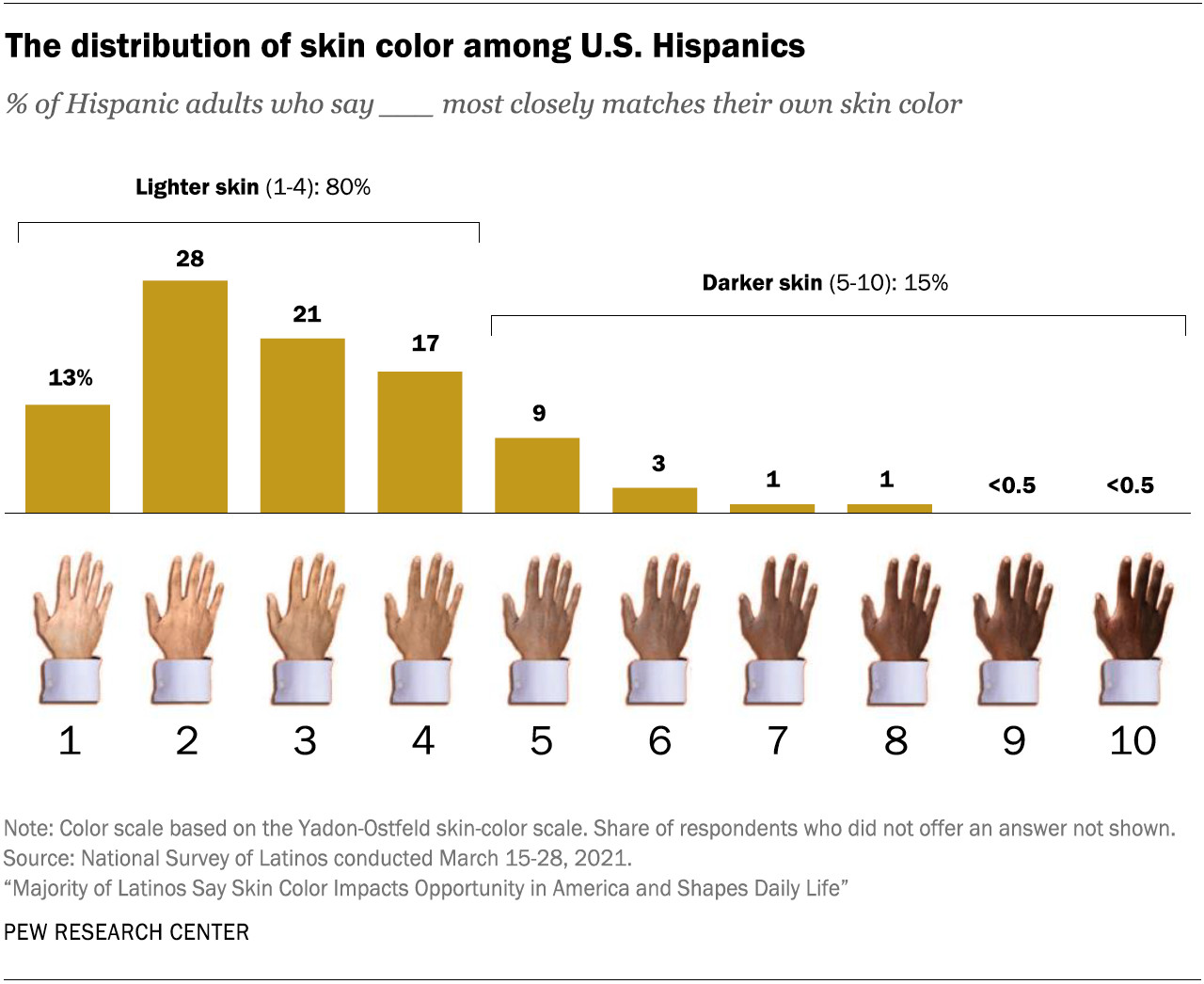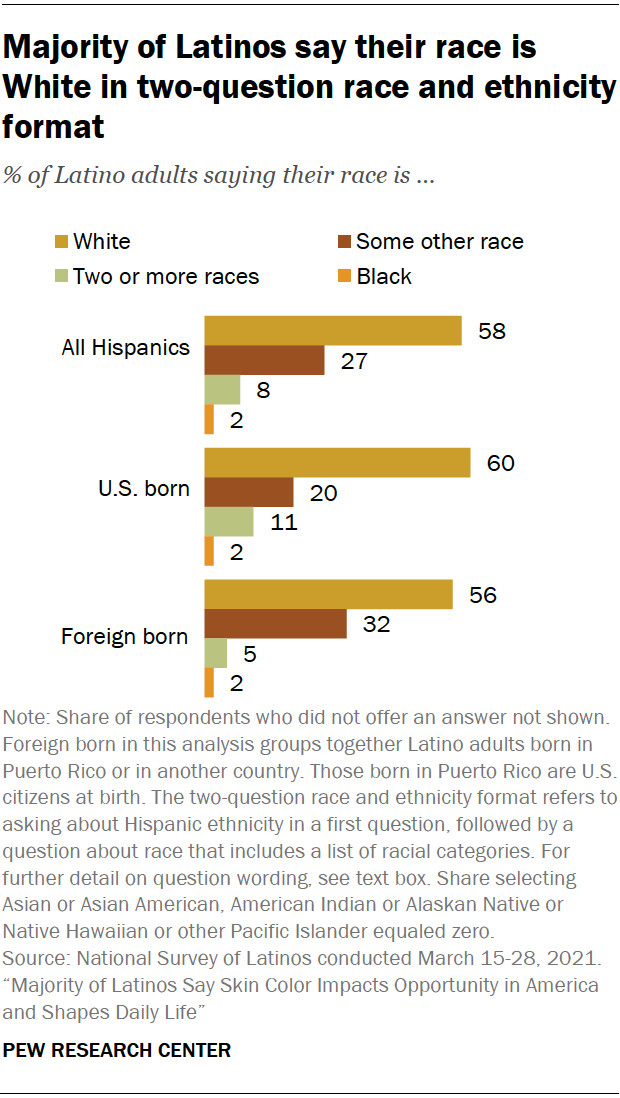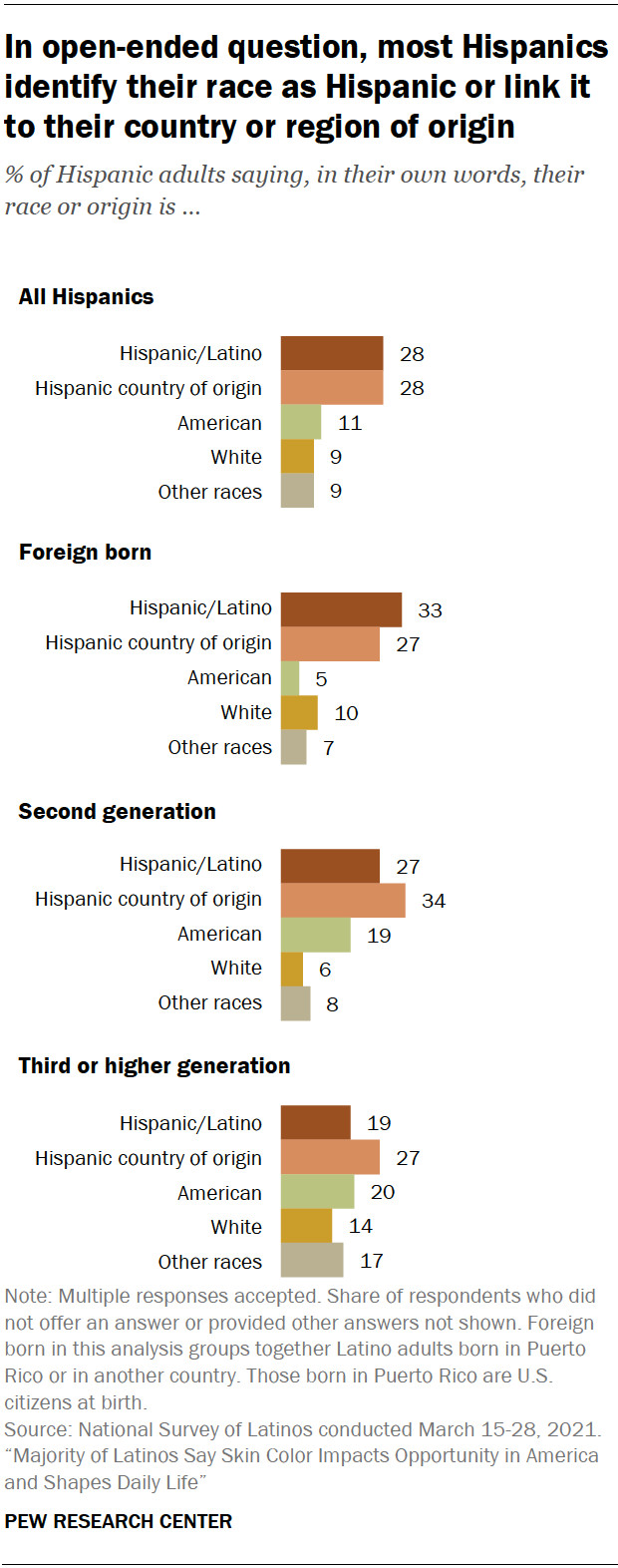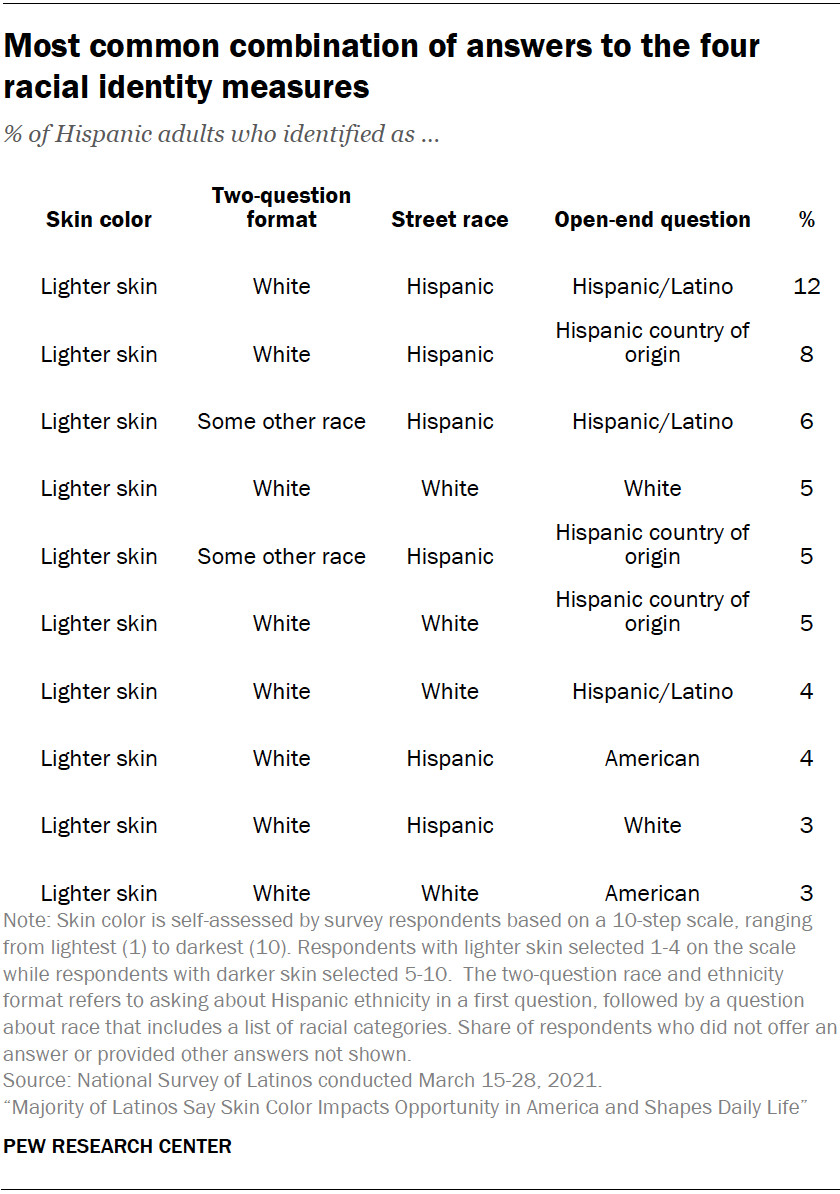Are you Mexican and wondering about your race? This is a common question with a complex answer. At gaymexico.net, we understand the importance of exploring identity, especially within the LGBTQ+ community in Mexico, and we’re here to guide you through the nuances of race and ethnicity. Discover how Mexican identity intersects with race, culture, and personal experience and delve into the factors that contribute to your sense of self.
1. What Factors Determine My Race if I Am Mexican?
Your race, if you are Mexican, is determined by a complex interplay of factors. These factors include your ancestry, skin color, cultural identity, and how you are perceived by others. Mexican identity encompasses a rich blend of Indigenous, European (primarily Spanish), and African heritage, making it difficult to fit neatly into traditional racial categories.
Elaboration:
- Ancestry: Mexico’s history is marked by the mixing of Indigenous populations with Spanish colonizers, and to a lesser extent, enslaved Africans. This process, known as mestizaje, resulted in a population with varying degrees of each ancestral component. Genetic ancestry tests can provide insights, but race is more than just genetics.
- Skin Color: Skin color plays a significant role in how individuals are perceived and treated in society. While there’s a wide range of skin tones among Mexicans, colorism (discrimination based on skin color) exists, affecting social mobility and opportunities. According to a Pew Research Center study, skin color influences how Latinos see themselves and how others see them.
- Cultural Identity: Many Mexicans identify strongly with their cultural heritage, including language, traditions, and values. This cultural identity can be more salient than racial classifications. Mexicans may prioritize their national identity over racial categories.
- Perception by Others: How others perceive your race can significantly impact your experiences. In the United States, Mexicans may be racialized as “Hispanic” or “Latino,” which are often treated as racial categories, even though they are technically ethnicities.
 The distribution of skin color among U.S. Hispanics
The distribution of skin color among U.S. Hispanics
2. Is Mexican a Race or an Ethnicity?
Mexican is generally considered an ethnicity, not a race. Ethnicity refers to shared cultural traits, language, ancestry, and traditions. Race, on the other hand, is often associated with physical characteristics, though its meaning is socially constructed and varies across time and place.
Elaboration:
- U.S. Census: The U.S. Census Bureau considers Hispanic or Latino to be an ethnicity, not a race. This means that individuals of Mexican descent can identify with any race they choose on the census form.
- Social Construct: Race is a social construct, meaning it’s a concept created and defined by society rather than a biological reality. The criteria for racial classification have changed over time and vary across different cultures.
- Fluidity of Identity: Many Mexicans see their identity as fluid and contextual. They may identify differently depending on the situation and who they are interacting with. Someone might emphasize their Mexican identity in one context and their Indigenous ancestry in another.
3. How Does Mestizaje Affect Racial Identity for Mexicans?
Mestizaje, the mixing of Indigenous, European, and African peoples in Mexico, profoundly complicates racial identity. Most Mexicans are mestizos, meaning they have a mixed heritage. This blending makes it difficult to assign a single racial label.
Elaboration:
- Colonial Legacy: Mestizaje was a product of Spanish colonialism, which established a racial hierarchy that privileged Europeans. Over time, mestizaje became a national ideology, emphasizing the creation of a new Mexican identity that blended different cultures and races.
- Varying Degrees of Ancestry: The degree of Indigenous, European, and African ancestry varies significantly among Mexicans. Some may have predominantly Indigenous ancestry, while others may have primarily European ancestry. This variation influences their physical appearance and how they identify.
- Cultural Synthesis: Mestizaje is not just a biological mixing but also a cultural synthesis. Mexican culture incorporates elements from Indigenous, European, and African traditions, creating a unique and vibrant heritage.
4. What Racial Categories Do Mexicans Identify With?
Mexicans identify with various racial categories, depending on their individual characteristics, ancestry, and personal beliefs. The most common categories include White, Mestizo, Indigenous, and “Some Other Race.”
Elaboration:
- White: Some Mexicans, particularly those with predominantly European ancestry, identify as White. This identification may be more common among those with lighter skin and European features.
-
- Mestizo: Mestizo is a common identity in Mexico, reflecting the mixed Indigenous and European heritage of most Mexicans. It acknowledges the blending of cultures and races that define Mexican identity.
- Indigenous: Many Mexicans identify with their Indigenous heritage, particularly those who maintain strong ties to Indigenous communities and traditions. Mexico has a diverse array of Indigenous groups, each with its own distinct language, culture, and identity.
- Some Other Race: In surveys, many Mexicans select “Some Other Race” when asked about their racial identity. This reflects the limitations of existing racial categories in capturing the complexities of Mexican identity. According to Pew Research Center, a significant percentage of Hispanics choose “Some Other Race” when asked about their race.
5. How Does Skin Color Influence Racial Identity Among Mexicans?
Skin color significantly influences racial identity among Mexicans, affecting both self-perception and social experiences. Lighter-skinned Mexicans may be more likely to identify as White, while darker-skinned Mexicans may face discrimination and be racialized differently.
Elaboration:
- Colorism: Colorism, or discrimination based on skin color, is a pervasive issue in Mexico and other Latin American countries. Lighter skin is often associated with higher social status and greater opportunities.
- Social Mobility: Studies have shown that lighter-skinned Mexicans tend to have better educational and employment opportunities than darker-skinned Mexicans. This disparity reflects the ongoing legacy of colonialism and racial hierarchies.
- Self-Perception: Skin color can influence how Mexicans see themselves and their place in society. Those with lighter skin may feel more accepted and integrated, while those with darker skin may experience marginalization and exclusion.
6. How Does the U.S. Census Measure Race and Ethnicity for Mexicans?
The U.S. Census Bureau uses a two-part question to measure race and ethnicity. First, respondents are asked if they are Hispanic or Latino. Then, they are asked to identify their race from a list of categories, including White, Black or African American, Asian, American Indian or Alaska Native, Native Hawaiian or Other Pacific Islander, and Some Other Race.
Elaboration:
- Hispanic/Latino as Ethnicity: The Census Bureau considers Hispanic or Latino to be an ethnicity, not a race. This means that individuals of Mexican descent can identify with any race they choose on the census form.
- Limitations of Categories: Many Mexicans find the available racial categories on the census to be inadequate or inaccurate. They may not feel that any of the categories accurately reflect their identity.
- Data Collection: The Census Bureau uses the data collected on race and ethnicity to enforce civil rights laws, track demographic trends, and allocate resources to communities. Accurate data is essential for addressing disparities and promoting equity.
 Majority of Latinos say their race is White in two-question race and ethnicity format
Majority of Latinos say their race is White in two-question race and ethnicity format
7. How Do Mexicans Describe Their Race in Their Own Words?
When asked to describe their race in their own words, Mexicans often use terms that reflect their mixed heritage, cultural identity, or national origin. Common responses include Mestizo, Hispanic, Latino, Mexican, or their specific country or region of origin.
Elaboration:
- Pan-Ethnic Terms: Many Mexicans use pan-ethnic terms like Hispanic or Latino to describe their race. These terms encompass a broad range of identities and experiences but may not fully capture the nuances of individual identity.
- National Origin: Identifying with their country of origin, such as Mexico, is another common way for Mexicans to describe their race. This reflects the strong connection many Mexicans feel to their national identity and cultural heritage.
- Specific Ancestry: Some Mexicans may choose to identify with their specific Indigenous or European ancestry, highlighting their connection to a particular group or region.
8. How Does Racial Identity Differ Between U.S.-Born and Foreign-Born Mexicans?
Racial identity can differ significantly between U.S.-born and foreign-born Mexicans. U.S.-born Mexicans may be more likely to identify as White or American, while foreign-born Mexicans may be more likely to identify as Mestizo or with their country of origin.
Elaboration:
- Acculturation: U.S.-born Mexicans may experience acculturation, adopting aspects of American culture and identity. This can lead to a shift in racial identification.
- Social Context: The social context in the United States can also influence racial identity. U.S.-born Mexicans may be racialized differently than foreign-born Mexicans, depending on their physical appearance and social interactions.
- Immigrant Experience: Foreign-born Mexicans may maintain a stronger connection to their cultural heritage and national identity, influencing their racial identification.
9. How Do LGBTQ+ Mexicans Navigate Racial and Ethnic Identity?
LGBTQ+ Mexicans navigate racial and ethnic identity in complex ways, often facing multiple layers of marginalization and discrimination. They may experience challenges related to their sexual orientation or gender identity, as well as their race or ethnicity.
Elaboration:
- Intersectionality: LGBTQ+ Mexicans experience intersectionality, the interconnected nature of social categorizations such as race, ethnicity, sexual orientation, and gender identity, creating overlapping systems of discrimination or disadvantage.
- Community and Support: Many LGBTQ+ Mexicans find community and support within LGBTQ+ organizations and networks. These groups provide a safe space for individuals to explore their identities and connect with others who share similar experiences.
- Cultural Acceptance: Attitudes toward LGBTQ+ people vary within Mexican culture. While there has been progress in recent years, LGBTQ+ Mexicans may still face stigma and discrimination in some communities. At gaymexico.net, we strive to provide resources and information to support LGBTQ+ individuals in Mexico.
10. What Resources Are Available for Exploring Mexican Racial Identity?
Several resources are available for exploring Mexican racial identity, including academic research, cultural organizations, and online communities. These resources can provide valuable insights and support for individuals seeking to understand their identity.
Elaboration:
- Academic Research: Academic research on race and ethnicity in Mexico and the United States can provide a deeper understanding of the historical, social, and political factors that shape racial identity.
- Cultural Organizations: Cultural organizations and museums can offer opportunities to learn about Mexican history, culture, and identity. These institutions often host exhibits and programs that explore the complexities of race and ethnicity.
- Online Communities: Online communities and forums can provide a space for Mexicans to connect with others, share their experiences, and explore their identities. These platforms can be particularly valuable for those who feel isolated or marginalized. Gaymexico.net offers a community platform for LGBTQ+ Mexicans and allies.
 In open-ended question, most Hispanics identify their race as Hispanic or link it to their country or region of origin
In open-ended question, most Hispanics identify their race as Hispanic or link it to their country or region of origin
Here is a detailed table for better understanding:
| Category | Description |
|---|---|
| Ancestry | Mexico’s history is a blend of Indigenous, European, and African heritages. Mestizaje influences racial identity. |
| Skin Color | Skin color affects social perception. Colorism exists in Mexico, influencing opportunities. |
| Cultural Identity | Strong cultural connections affect identity. Language, traditions, and values play key roles. |
| Perception by Others | How others perceive race influences personal experiences. In the U.S., Mexicans are often categorized as “Hispanic” or “Latino”. |
| Ethnicity vs. Race | Mexican is generally considered an ethnicity. Race is a social construct with changing criteria. |
| U.S. Census | The U.S. Census sees “Hispanic/Latino” as ethnicity, allowing individuals to choose a race. |
| Mestizaje | The mixing of Indigenous, European, and African peoples complicates racial identity. Most Mexicans are mestizos. |
| Racial Categories | Common categories include White, Mestizo, Indigenous, and “Some Other Race”. Identification depends on ancestry and beliefs. |
| Skin Color Impact | Skin color affects self-perception. Lighter-skinned Mexicans might identify as White. Darker-skinned Mexicans may face discrimination. |
| Census Measurement | The U.S. Census uses a two-part question. Challenges include limited category accuracy for Mexicans. |
| Self-Description | Mexicans often describe their race as Mestizo, Hispanic, Latino, Mexican, or by their origin. |
| U.S. vs. Foreign Born | U.S.-born Mexicans might identify as White or American. Foreign-born Mexicans may identify as Mestizo or by origin. |
| LGBTQ+ Mexicans | LGBTQ+ Mexicans face unique challenges with race and ethnicity. Intersectionality affects experiences. |
| Available Resources | Academic research, cultural groups, and online platforms provide insights and support. |
Navigating Your Identity
Understanding your race as a Mexican is a personal journey. It involves exploring your ancestry, acknowledging your cultural heritage, and understanding how you are perceived by others. Whether you identify as White, Mestizo, Indigenous, or another category, your identity is valid and valuable.
The Role of Gaymexico.net
At gaymexico.net, we recognize the importance of exploring and celebrating diverse identities within the LGBTQ+ community in Mexico. We strive to provide a safe and inclusive space for individuals to connect, share their stories, and learn about the rich cultural heritage of Mexico.
- Community Building: We offer a platform for LGBTQ+ Mexicans and allies to connect and build community.
- Cultural Exploration: We provide information and resources about Mexican culture, history, and traditions.
- Safe Travel Advice: We offer tips and advice for LGBTQ+ travelers visiting Mexico, ensuring a safe and welcoming experience.
 Most common combination of answers to the four racial identity measures
Most common combination of answers to the four racial identity measures
Exploring LGBTQ+ Culture in Mexico
Mexico is a vibrant and diverse country with a growing LGBTQ+ community. Cities like Mexico City, Puerto Vallarta, and Guadalajara offer a welcoming environment for LGBTQ+ travelers and residents.
- LGBTQ+ Events: Mexico hosts numerous LGBTQ+ events throughout the year, including pride parades, film festivals, and cultural celebrations.
- Gay-Friendly Venues: Many bars, clubs, and hotels in Mexico cater specifically to the LGBTQ+ community, providing a safe and inclusive space for socializing and entertainment.
- Legal Protections: While there is still work to be done, Mexico has made progress in recent years in terms of LGBTQ+ rights, including legalizing same-sex marriage in many states.
Find Resources and Support
If you’re looking for more information about LGBTQ+ culture in Mexico or need support, here are some valuable resources:
- Gaymexico.net: Your go-to source for LGBTQ+ travel guides, event listings, and community connections in Mexico.
- Local LGBTQ+ Organizations: Connect with local organizations in Mexico for support and resources.
- Online Forums and Communities: Engage with online communities to share experiences and gain insights.
Conclusion
Understanding your race if you are Mexican is a multifaceted journey that involves considering ancestry, skin color, cultural identity, and personal experiences. As you navigate this journey, remember that your identity is unique and valuable. At gaymexico.net, we are committed to providing a supportive and inclusive space for LGBTQ+ Mexicans and allies to explore their identities and connect with community.
Ready to explore Mexico’s vibrant LGBTQ+ scene? Visit gaymexico.net for travel guides, event listings, and community connections. Discover the beauty and diversity of Mexico while celebrating your unique identity.
(Address: 3255 Wilshire Blvd, Los Angeles, CA 90010, United States. Phone: +1 (213) 380-2177. Website: gaymexico.net.)
FAQ Section
1. Is it offensive to ask someone what their race is?
It depends on the context. It’s generally best to avoid asking about someone’s race unless it is relevant to the conversation and you are asking out of genuine curiosity and respect.
2. Can a person change their racial identity?
Racial identity is complex and personal. While race is often assigned at birth, an individual’s sense of self and how they identify can evolve over time.
3. What is the difference between race and nationality?
Race refers to physical characteristics and social constructs, while nationality refers to a person’s citizenship or country of origin.
4. How can I be respectful when talking about race?
Use respectful language, avoid stereotypes, and listen to how people describe themselves. Be mindful of the impact your words may have.
5. What does it mean to be a person of color?
“Person of color” is a term used to describe individuals who are not considered White. It is often used to acknowledge shared experiences of racism and discrimination.
6. Why is it important to talk about race?
Talking about race is important for understanding social inequalities, promoting diversity and inclusion, and fostering empathy and understanding.
7. What is the impact of colonialism on race in Mexico?
Colonialism established racial hierarchies in Mexico, privileging Europeans and marginalizing Indigenous and African populations. This history continues to shape racial dynamics in the country today.
8. How does discrimination affect racial identity?
Experiencing discrimination can lead individuals to internalize negative stereotypes and feel marginalized or excluded. It can also strengthen their sense of identity and connection to their community.
9. What role does culture play in shaping racial identity?
Culture plays a significant role in shaping racial identity, providing a sense of belonging, shared values, and traditions. It can also influence how individuals perceive themselves and others.
10. Where can I find more information about race and ethnicity in Mexico?
You can find more information about race and ethnicity in Mexico from academic research, cultural organizations, and online communities like gaymexico.net, which focuses on the LGBTQ+ experience in Mexico.